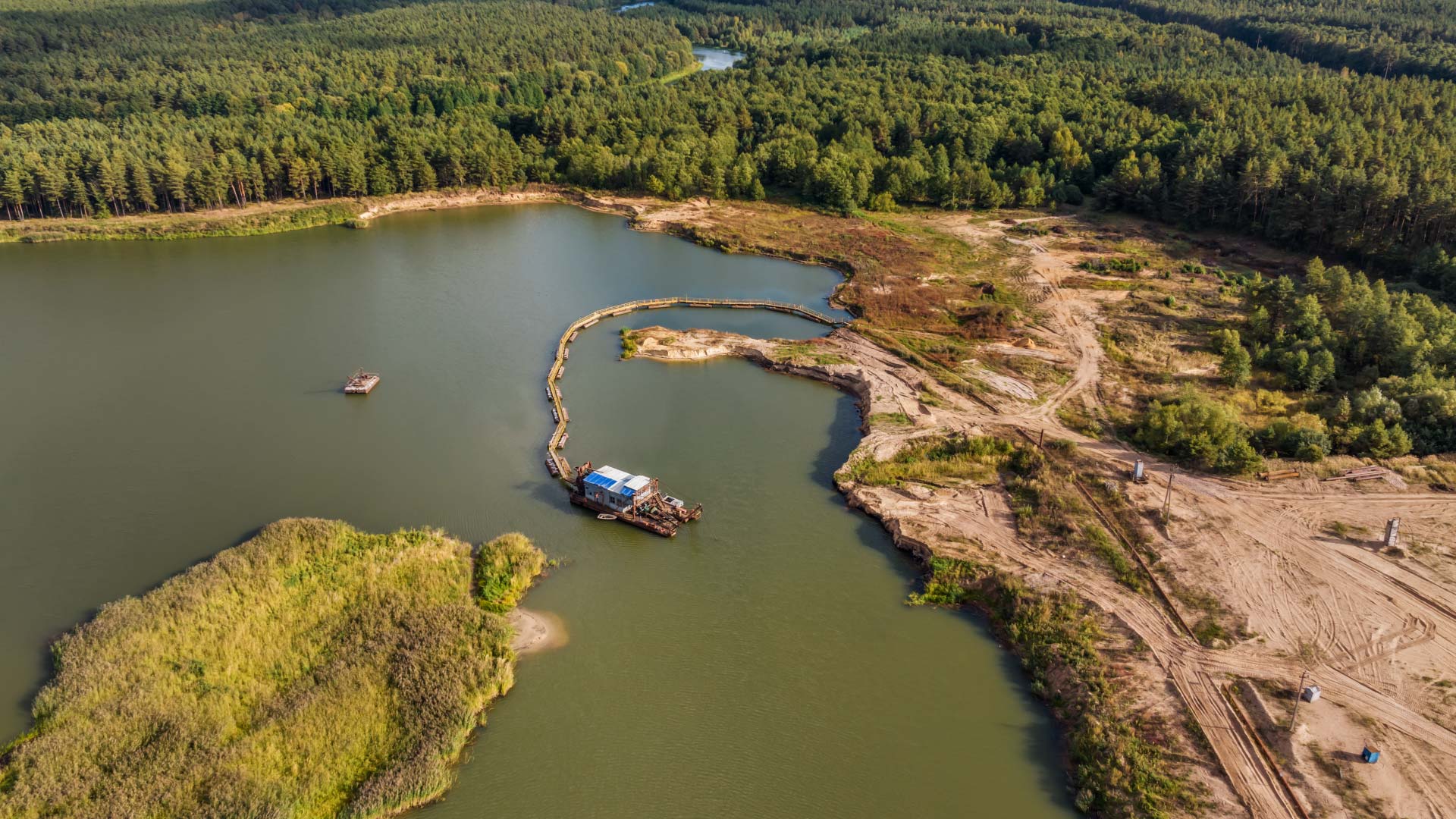- 1. Understanding Dredging and Its Environmental Impact
- 2. The Importance of Protecting Lake Ecosystems
- 3. Designing an Environmentally Conscious Dredging Initiative
- 4. Long-Term Benefits of Sustainable Dredging
- 5. Innovations in Sustainable Dredging
- 6. How Governments Can Lead the Way
- Conclusion: Preserving Beauty for Future Generations
1. Understanding Dredging and Its Environmental Impact
Dredging is a critical activity for maintaining and restoring waterways, ensuring they remain navigable and ecologically viable. Whether it’s clearing sediment from rivers, maintaining ports, or rejuvenating lakes, dredging plays a vital role in water resource management. However, as beneficial as dredging can be, it poses significant risks to the environment if not managed carefully. Striking a balance between operational efficiency and ecological preservation is essential.
This initiative, focused on safeguarding a lake’s ecosystem, demonstrates how careful planning and sustainable practices can mitigate environmental impacts while restoring waterway health. By prioritizing environmental conservation, the initiative ensures that future generations can enjoy the lake’s natural beauty and resources.
What is Dredging?
Dredging involves removing sediment, debris, and other materials from the bottom of lakes, rivers, harbors, and other water bodies. Its primary applications include maintaining navigable waterways, preventing flooding, and supporting ecological restoration efforts. In lakes, dredging often addresses issues such as sediment buildup that impedes water flow or harms aquatic ecosystems.
Potential Environmental Risks
Despite its utility, dredging can cause significant environmental disruptions:
- Habitat Disruption: Aquatic flora and fauna face displacement or destruction when their habitats are disturbed.
- Water Quality Degradation: Stirring up sediment can release pollutants trapped in the substrate, leading to turbidity and reduced water quality.
- Effects on Aquatic Life: Noise, vibration, and changes in water conditions can stress or harm aquatic organisms.
Why Sustainable Dredging is Vital
Sustainable dredging practices are designed to minimize these risks while achieving project goals. By maintaining ecological balance, these practices:
- Protect biodiversity and vital habitats.
- Ensure the long-term health of ecosystems that local communities depend on for fishing, recreation, and tourism.
2. The Importance of Protecting Lake Ecosystems
Ecological Significance of Lakes
Lakes are biodiversity hotspots, hosting a variety of plant and animal species. They play an integral role in maintaining the water cycle and local climate stability. Healthy lakes also act as natural filters, improving water quality by trapping sediments and pollutants.
Threats to Lakes
Over time, lakes face numerous threats:
- Sedimentation and Pollution: Human activities accelerate sediment buildup, reducing lake depth and water quality.
- Overuse of Natural Resources: Excessive withdrawal of water or overfishing can upset ecological balance.
The Role of Dredging in Lake Health
Dredging can address these challenges by:
- Removing Excess Sediment: This restores water flow, improves depth, and enhances aquatic habitats.
- Improving Water Quality: Clearing pollutants and debris reduces turbidity and promotes healthier ecosystems.
3. Designing an Environmentally Conscious Dredging Initiative
Careful Planning and Execution
To minimize environmental impacts, a sustainable dredging initiative must:
- Conduct Environmental Impact Assessments: These identify potential risks and inform mitigation strategies.
- Collaborate with Experts: Ecologists and conservationists help design dredging plans that respect natural ecosystems.
Key Sustainability Practices
Several measures ensure that dredging activities are environmentally conscious:
- Eco-Friendly Equipment: Using machinery that minimizes noise and emissions.
- Reducing Habitat Disruption: Deploying silt curtains and avoiding dredging during breeding seasons.
- Mitigation Strategies: Ensuring disturbed areas are rehabilitated and replanted.
Incorporating Community Input
Community involvement is essential for the initiative’s success:
- Local Stakeholder Engagement: Residents, fishermen, and environmental groups provide valuable insights and support.
- Educational Outreach: Informing communities about the benefits of sustainable dredging fosters cooperation and advocacy.
4. Long-Term Benefits of Sustainable Dredging
Environmental Benefits
Sustainable dredging contributes to:
- Enhanced Water Quality: Clearer, cleaner water supports aquatic life and recreational activities.
- Habitat Preservation: Protecting aquatic flora and fauna ensures biodiversity thrives.
Social and Economic Advantages
Healthy lakes benefit local economies and communities by:
- Boosting Tourism: A restored lake attracts visitors for fishing, boating, and sightseeing.
- Sustainable Resource Use: Ensuring water and fish stocks are available for future generations.
5. Innovations in Sustainable Dredging
The rise of technology has significantly improved the environmental performance of dredging projects. Innovations such as real-time monitoring systems, precision dredging equipment, and biodegradable dredging aids are transforming how projects are conducted. These tools ensure sediment is removed efficiently, while minimizing disturbances to the ecosystem.
Key technological advances include:
- Real-Time Monitoring: Sensors provide instant feedback on turbidity and water quality, allowing operators to adjust methods and reduce impact.
- Precision Dredging Equipment: Modern machinery targets specific areas for sediment removal, minimizing unnecessary disruption.
- Biodegradable Aids: Eco-friendly polymers and materials used during dredging dissolve harmlessly, further protecting aquatic life.
6. How Governments Can Lead the Way
Developing Comprehensive Policies
Governments play a crucial role in promoting sustainable dredging through:
- Legal Frameworks: Enforcing regulations to prevent harmful practices.
- Research and Development Funding: Supporting advancements in eco-friendly dredging technologies.
Promoting International Collaboration
Global cooperation helps share innovations and best practices, ensuring that all nations benefit from sustainable approaches.
Encouraging Public-Private Partnerships
By partnering with private firms, governments can leverage expertise and resources to achieve sustainable outcomes efficiently.
Conclusion: Preserving Beauty for Future Generations
Dredging is an indispensable tool for maintaining healthy water bodies, but its benefits must not come at the expense of the environment. Sustainable dredging initiatives, like the one designed to protect this lake, demonstrate that ecological conservation and operational efficiency can go hand in hand.
By adopting careful planning, innovative technologies, and community collaboration, we can safeguard natural ecosystems for generations to come. Support and advocate for sustainable dredging practices to ensure the beauty and biodiversity of our lakes endure.
